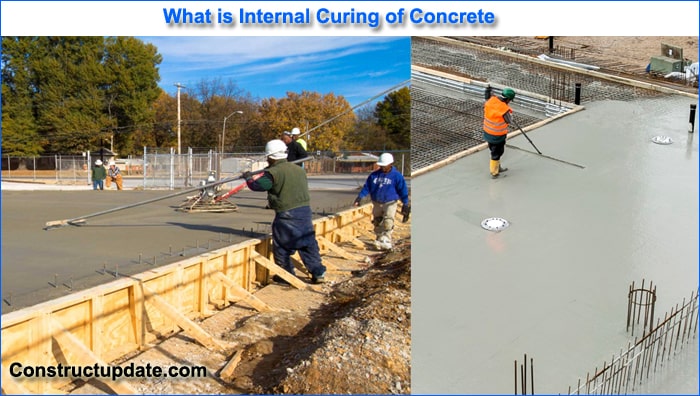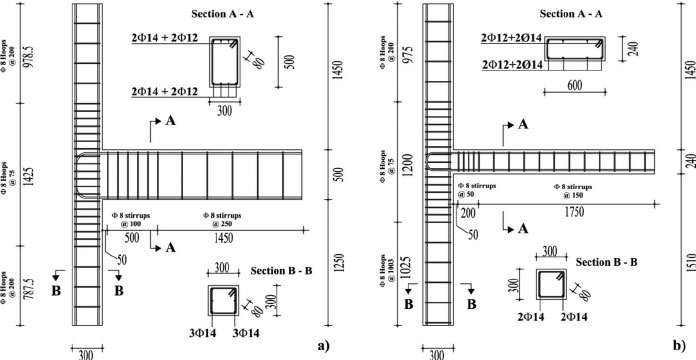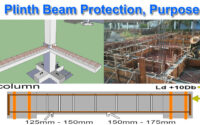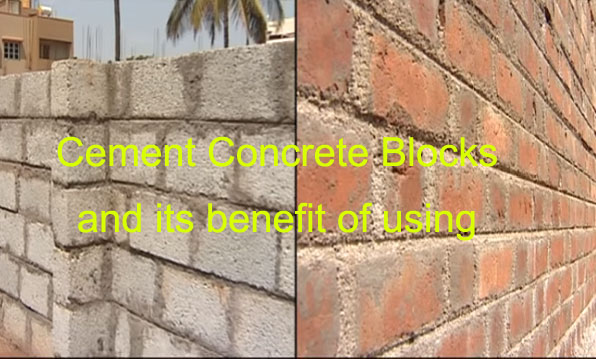Internal Curing of Concrete Methods | Purpose of Internal Curing of Concrete
In accordance with ACI concrete terminology, “internal curing refers to the process by which the hydration of cement occurs because of the availability of additional internal water that is not part of the mixed water.”
Internal curing enables concrete to reach its full potential in an efficient and long-lasting way.
Internally cured concrete uses absorbent elements that have been moistened beforehand. When the concrete’s internal humidity falls below 100%, this moisture is distributed throughout the material to keep the cement paste wet and promote greater cement hydration. As a result, concrete gains in strength and longevity.

What is Internal Curing of Concrete?
Internal curing is the process of adding a curing ingredient to a concrete mixture. Superabsorbent polymers or saturated porous aggregate can be used as the curing agent (SAPs).
For the purpose of internal curing, lightweight materials such as expanded shale, slag, pumice, perlite, and clay can be used in place of conventional strength aggregate.
To replenish the moisture lost by chemical shrinkage and self-desiccation, the porous lightweight aggregates act as an internal reservoir that supplies an internal source of water.
Different cementitious materials are better hydrated by the interior water. It thereby reduces the occurrence of autogenous shrinkage and the ensuing cracking.
Due to its low permeability and the fact that external curing has a negligible impact on the hydration of the internal portion of the concrete, internal curing is particularly advantageous for low water-cementitious material ratios.
Concrete’s internal curing works in conjunction with surface curing rather than in a substitute of it to generate better concrete. It aids in making up for subpar, typical concrete that regularly appears on construction sites as well as for unfavorable weather that could hinder the development of concrete’s strength.
How does Internal Curing Work?
The amount of water needed from the lightweight aggregate, the desorption characteristics of the lightweight aggregate, and the spacing of the lightweight aggregate within the mixture are the three main factors that influence the internal curing of concrete.
Volume of Water Required from Lightweight Aggregate
Chemical and autogenous shrinkage determine the volume of aggregate needed from lightweight aggregate. These two components may be measured, and the difference between them determines how much water the lightweight aggregate needs.
Desorption Capability of Lightweight Aggregate
Internal reservoir (saturated aggregate) should have substantially larger individual pores than usual holes formed in the cement paste and be well-connected for internal curing to proceed successfully.
The capillary pores in the cement paste are refined during cement hydration, and their radii will be smaller than those in lightweight aggregate. This makes it easier for water to transfer from cement paste to aggregate.
Humidity gradient and capillary pressure start to form as soon as the relative humidity drops as a result of chemical shrinkage and self-desiccation. In order to continue cement hydration, this creates suction that sucks water from the light-weight aggregates into the fluid or drying cement paste.
The pores in the cement paste shrink as more hydration takes place, increasing the suction force that draws more water from the reservoir. Until the entire cement is hydrated or the relative humidity in the internal reservoir of lightweight aggregate reaches the same level as the hydrating cement paste, which reduces capillary pressure, water flow won’t stop.
Advantages
The following benefits result from improved internal cement hydration brought on by internal curing:
- Enhanced concrete’s resistance to creep
- Increased strength of concrete
- Lower permeability
- Improved resilience to chemical attacks, deicing agents, and cycles of freezing and thawing
- Reduced warping improved dimensional stability increased resilience to early age cracking





